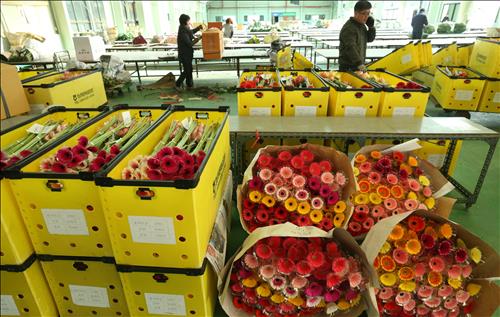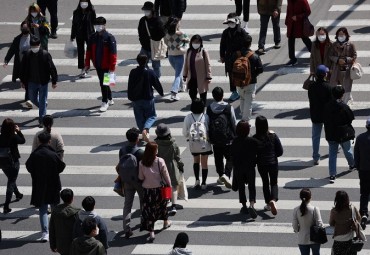
The local floricultural industry is facing a downturn despite the annual graduation season, industry sources said Thursday, due to increasing production costs and stagnant consumption. (Image : Yonhap)
SEOUL, Feb. 4 (Korea Bizwire) – The local floricultural industry is facing a downturn despite the annual graduation season, industry sources said Thursday, due to increasing production costs and stagnant consumption.
At a high school graduation ceremony held earlier this week at Changwon, South Gyeongsang Province, 90 percent of the flowers that were being sold were artificial ones, mostly made in China.
“Instead of real flowers that wither quickly, artificial ones decorated with candies or chocolates sell much better,” a 51-year-old florist, surnamed Kim, said.
For gifts, allowances, laptops and smartphones are much more popular than flowers.
Meanwhile, flower producers are facing difficulties due to last November’s rainy spell and the recent cold wave.
Local farmers said the output decreased by more than 30 percent compared to last year, but the cold weather increased the production cost more than 20 percent during the period.
“Roses grow the best in 20 degrees but it is hard to keep the temperature above 17 due to the electricity cost,” a 55-year-old florist, surnamed Kim, said.
The depression in the harvest directly affects the consumer price.
A bundle of roses, which is the most popular this season, sold for 8,149 won (US$7) at a local flowering plant joint market, 45.6 percent more expensive than 5,597 won last November.
Exports to Japan have also become sluggish due to the low yen.
“It is getting more and more difficult as the production cost increases while consumption decreases,” said Jung Soo-yeong, who grows roses in Goyang, Gyeonggi Province.
The import of low-cost Chinese flowers is another major factor that strains the local flower producers.
“At a wholesale market, a bunch of homegrown roses cost 9,000 won to 10,000 won, whereas Chinese ones only cost 3,000 won to 4,000 won,” a 49-year-old floriculturist, surnamed Lee, said.
The industry’s efforts to reform itself are crucial.
“Selling a wreath that cost 60,000 won for production at 50,000 to 55,000 won is a case where parts of the flowers are artificial or reused,” a florist, who wanted to remain anonymous, said.
Park Won-chul, an official at a floricultural co-op, said the distortion in the local production and consumer market will ultimately lead to the destruction of the industry.
“The return of competitive production and a sound consumer culture is necessary,” he said.
(Yonhap)






